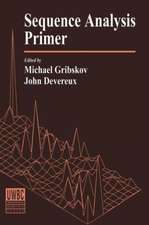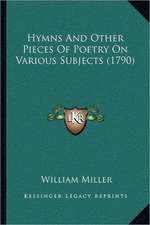Cloning, Gene Expression and Protein Purification: Experimental Procedures and Process Rationale
Editat de Charles Hardin, Jennifer Pinczes, Andrew Riell, David Presutti, William Miller, Dominique Robertsonen Limba Engleză Paperback – 17 mai 2001
� Emphasizes electrophoresis, Southern and Western blotting, and combinatorial techniques
� Defines clear reaction mechanisms; stipulates the functions of reagents; and helps students think about the precise consequences of solution and procedural manipulations
� Discusses fluorophores, and solvent effects on protein structure
� Characterizes plasmids, cDNAs, and antibody probes (available from ATCC) in research literature
� Includes carefully selected primary source research literature and articles from current vendor literature
� Contains a glossary of unfamiliar phrases and jargon; important summary statements and conclusions are italicized
� Provides an alphabetized list of common reagents for rapid reference
� Offers an extensive index of concepts and terms
� Categorizes helpful and distinctive information into five types of supplemental literature: Innovation/ Insight, Theory/Principle, Process Rationale, Vendor Literature, and Alternative Approaches
Preț: 447.36 lei
Preț vechi: 642.61 lei
-30% Nou
85.61€ • 89.05$ • 70.68£
Carte tipărită la comandă
Livrare economică 03-09 aprilie
Specificații
ISBN-10: 0195132947
Pagini: 448
Ilustrații: numerous tables
Dimensiuni: 217 x 278 x 22 mm
Greutate: 1.03 kg
Editura: Oxford University Press
Colecția OUP USA
Locul publicării:New York, United States
Descriere
On the forefront of modern scientific innovation, Cloning, Gene Expression and Protein Purification: Experimental Procedures and Process Rationale effectively doubles as a laboratory manual for students and a reference book for professional researchers. Designed for advanced undergraduate and beginning graduate students in molecular biology, this unique combination lecture/laboratory resource presents detailed protocols for the multi-step process involved in isolating a gene, cloning and characterizing it, expressing its encoded protein, and purifying and characterizing the protein's basic physical properties. This manageable volume includes both theoretical background and practical procedures and is structured around twenty experiments that demonstrate how to prepare, manipulate, and analyze plasmids, produce fusion proteins in bacteria, and purify these proteins based on unique chemical properties or substrate affinities. The book describes advanced topics such as the use of antibodies and the techniques developed to transform their structures, as well as combinatorial approaches designed to manipulate the structure and functions of proteins and nucleic acids. Supplemental literature provides a variety of theoretical explanations encouraging a more intuitive understanding of the experimental mechanisms and behaviors of the chemical participants, while also giving students the tools needed to become capable proactive researchers. Features:
� Emphasizes electrophoresis, Southern and Western blotting, and combinatorial techniques
� Defines clear reaction mechanisms; stipulates the functions of reagents; and helps students think about the precise consequences of solution and procedural manipulations
� Discusses fluorophores, and solvent effects on protein structure
� Characterizes plasmids, cDNAs, and antibody probes (available from ATCC) in research literature
� Includes carefully selected primary source research literature and articles from current vendor literature
� Contains a glossary of unfamiliar phrases and jargon; important summary statements and conclusions are italicized
� Provides an alphabetized list of common reagents for rapid reference
� Offers an extensive index of concepts and terms
� Categorizes helpful and distinctive information into five types of supplemental literature: Innovation/ Insight, Theory/Principle, Process Rationale, Vendor Literature, and Alternative Approaches























